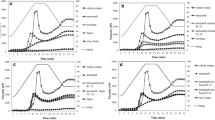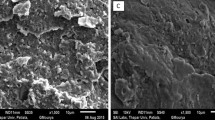Abstract
The use of amaranth, quinoa and buckwheat for the production of gluten-free pasta was investigated in the present study. The aim of the work was to produce pasta of good textural quality, in particular, low cooking loss, optimal cooking weight and texture firmness. The results demonstrated that pasta produced from amaranth had decreased texture firmness and cooking time, while pasta from quinoa mainly showed increased cooking loss. In buckwheat pasta the least negative effects were observed. By combination of all three raw materials to one flour blend in the ratio of 60% buckwheat, 20% amaranth and 20% quinoa, dough matrix was improved. After decreasing dough moisture to 30%, addition of an increased amount of egg white powder of 6% and addition of 1.2% emulsifier (distilled monoglycerides) texture firmness as well as cooking quality of gluten-free pasta produced from such a flour blend reached acceptable values comparable to wheat pasta.

Similar content being viewed by others
References
Schoenlechner R, Siebenhandl S, Berghofer E (2008) Pseudocereals. In: Arendt EK, Dal Bello F (eds) Gluten-free cereal products and beverages. Academic, New York, pp 149–190
Calderon de la Barca AM, Rojas-Martinez ME, Islas-Rubio AR, Cabrera-Chavez F (2010) Gluten-free breads and cookies of raw and popped amaranth flours with attractive technological and nutritional qualities. Plant Foods Hum Nutr 65:241–246
Manthey FA, Hall CA III (2007) Effect of processing and cooking on the content of minerals and protein in pasta containing buckwheat bran flour. J Sci Food Agric 87:2026–2033
Alamprese C, Casiraghi E, Pagani MA (2007) Development of gluten-free fresh egg pasta analogues containing buckwheat. Eur Food Res Technol 225:205–213
Wesche-Ebeling P, Argaiz-Jamet A, Bonilla-Lopez I, Lechuga-Ortega L, Lopez-Malo A (1996) Development of a high quality pasta product using optimum levels of amaranth grain flour, wheat flour and dry egg. Institute of Food Technologists Abstracts, p 53.
Rayas-Duarte P, Mock CM, Satterlee LD (1996) Quality of spaghetti containing buckwheat, amaranth and lupin flours. Cereal Chem 73:381–387
Lorenz K, Gifford H, Johnson DL (1993) Quinoa in pasta products. In: Charalambous, G. (ed), Food flavours, ingredients and composition. Elsevier Science Publishers BV, pp 781–790
Caperuto L, Amaya-Farfan J, Camargo C (2001) Performance of quinoa (Chenopodium quinoa Willd) flour in the manufacture of gluten-free spaghetti. J Sci Food Agric 81:95–101
Chillo S, Suriano N, Lamacchia C, Del Nobile MA (2009) Effects of additives on the rheological and mechanical properties of non-conventional fresh handmade tagliatelle. J Cereal Sci 49:163–170
Chillo S, Laverse J, Falcone PM, Del Nobile MA (2007) Effect of carboxymethylcellulose and pregelatinized corn starch on the quality of amaranthus spaghetti. J Food Eng 83:492–500
Chillo S, Civica V, Iannetti M, Suriano N, Mastromatteo M, Del Nobile MA (2009) Properties of quinoa and oat spaghetti loaded with carboxymethylcellulose sodium salt and pregelatinized starch as structuring agents. Carbohydr Polym 78:932–937
Kovacs ET, Maraz-Szabo L, Varga J (2001) Examination of the protein-emulsifier-carbohydrate interactions in amaranth based pasta products. Acta Aliment Hung 30:173–187
AACC International. Approved Methods of Analysis, 11th edn. Method 66-50.01. Pasta and noodle cooking quality—firmness title of method. AACC International, St. Paul, MN, USA doi: 10.1094/AACCIntMethod-66-50.01
Author information
Authors and Affiliations
Corresponding author
Rights and permissions
About this article
Cite this article
Schoenlechner, R., Drausinger, J., Ottenschlaeger, V. et al. Functional Properties of Gluten-Free Pasta Produced from Amaranth, Quinoa and Buckwheat. Plant Foods Hum Nutr 65, 339–349 (2010). https://doi.org/10.1007/s11130-010-0194-0
Published:
Issue Date:
DOI: https://doi.org/10.1007/s11130-010-0194-0




